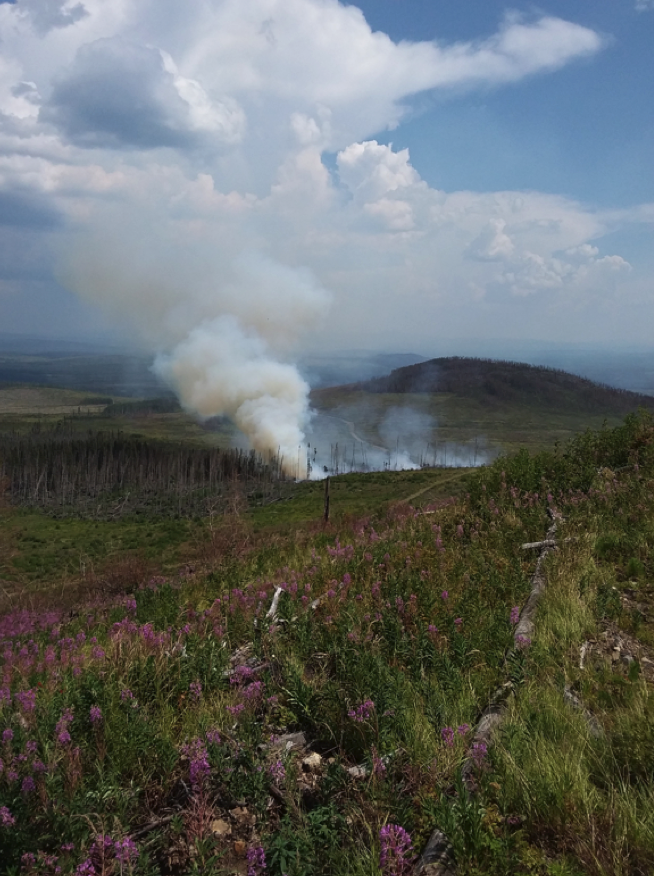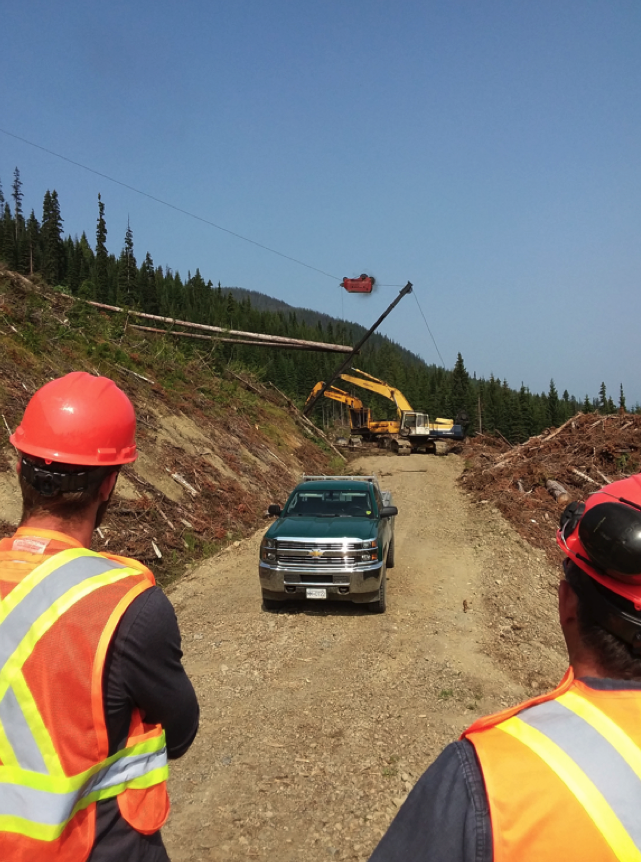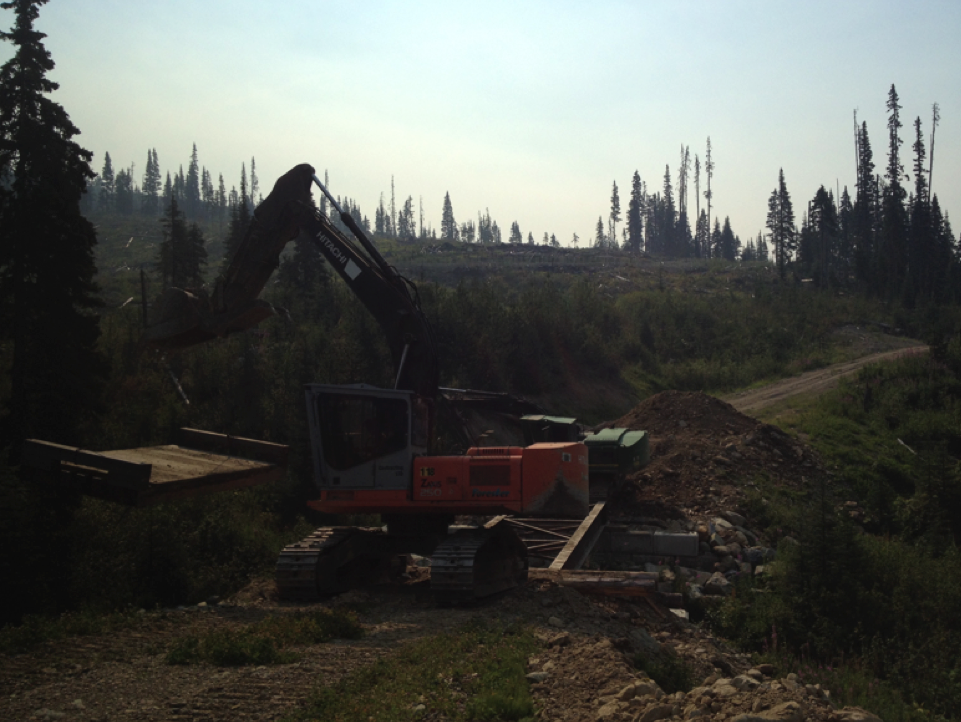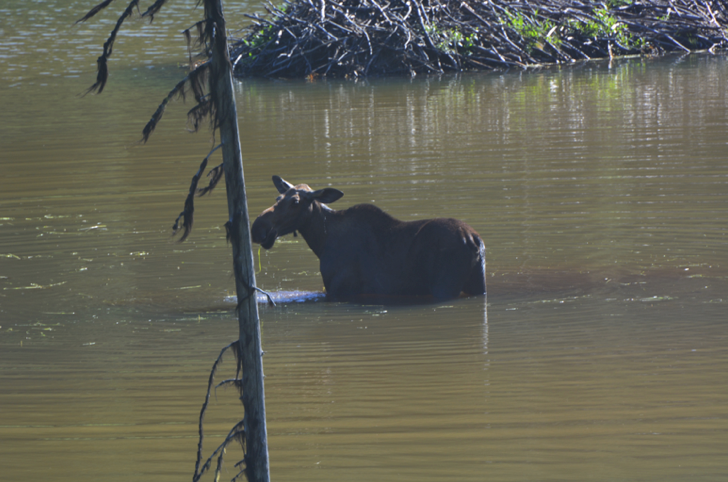Blog 5 – Alexander Davis
August 13, 2018 11:02 am Leave your thoughts
As the summer’s end inches closer, the weeks of work at West Fraser seem to have become increasingly interesting and unpredictable. In the past two weeks, I have been given ample opportunity to experience different aspects of forestry including forest fire fighting, Operations, and logging.
A dry, hot weekend reaching temperatures over 30° C came to a close to be followed by the start of a stormy week where numerous lightning storms ravaged the Cariboo region. Smoke has lingered forebodingly in the Quesnel area skies for nearly two weeks now. By Wednesday morning, the office was in a frenzy, receiving frequent calls as new fires were discovered. We were told to wait and complete some office work while the best distribution of human and machine resources was discussed. Four of us finally departed towards a couple small fires that had been reported adjacent to a logging road near Wells. We loaded up the pickups with water cubes, pumps, hoses, hand tools, and hosing accessories while poor Aaron Eddie was tasked with the organisation and inventory of the fire shed whilst getting bombarded by people rushing in and out.
We arrived at the scene about half past 10 where a small fire smoldered innocently in a cut block above the road. There were very few flames at this point but a fair amount of smoke. We dammed a nearby creek to the best of our ability and set up a pump to fill up each water cube which have a capacity of 1000 liters. 1.5’ hoses were run along the extent of the road below the fire with smaller “econo” hosing leading upwards from the mainline at equal intervals. We worked in groups of two, one person manning the hose while the other turned up hot, smoldering coals, that were not visible atop the mineral soil, with a Pulaski. We spent a number of hours at this fire before getting a call from a nearby co-worker to help him with another fire that was approaching a large cull pile of wood left over from logging.
Two hours later and we had all but put out any last remnants of this fire. We drove back to the fire where we had previously been working to find the flames had jumped the guard above the fire, put in place by machinery to mitigate fire spread, and had started burning upslope towards the standing timber. We made a feeble last-ditch effort to try and put out the blaze with hand tools and hosing to no avail due to high winds and intense heat and smoke. No machine operator could get to us at this time and it was getting on toward 6:00 so we decided to call it a night and hope for favourable overnight weather.
We set out right away the next morning with a re-stocked cavalry of about 8 people. We heard word that the fire had spread to reach a size of about 30 hectares overnight. Sure enough, when we arrived on site the winds had changed and taken the fire downhill. The fire had jumped the road at the base of the original site and had started burning through cut blocks adjacent to the other side of the road. Luckily the ministry fire fighters had also arrived on site and we had a plethora of heavy machinery including a bulldozer, excavator, and feller buncher at our disposal. The fire crew chief told us to tackle a few smoldering sections of fire from the lower road that threatened to jump another road or set ablaze the nearby standing timber. The machine operators set about forming new fire guards around the blaze. We put out these lower flames without much problem and then started doing water runs to fill up their water bladder which can hold a much higher capacity of water than the cubes we had in the back of our pickups. A water truck arrived on the scene soon after and we were relieved of our duties for the day while the ministry fire crew kept working long into the night.
We set out the next morning to put a damper on any last remnants of the fire. Every last smoldering coal was thoroughly dug up and blasted with water until we were satisfied that the fire would no longer spread. And so, ended my first few days of firefighting to make way for the long weekend which I spent in Powell River for a family reunion. While I can say I did enjoy it, I don’t think I would want to embark upon a full summer of firefighting as many of my classmates do. There is a high likelihood that we will be sent back out to different fires in the Quesnel area during our last few weeks of work.
In other news, all of us summer students had the opportunity to go out and watch both cable and traditional logging take place. Cable logging is used on blocks that are comprised of continuous steep slopes that hinder road access throughout the block. At this point in time, all the standing timber has been felled, either by hand or by feller buncher, but skidders are unable to transport the timber to the roadside landings due to steep slope gradients. Cable logging or yarding consists of a system that uses cables to transport material from the woods to the landings where they are loaded onto logging trucks. The cables are strung in corridors through the stand and are remotely operated by a machine operator at the landing site and an on-foot worker within the block who manually places the ends of the cables around each fallen tree. This process takes much longer than conventional logging and therefore costs nearly twice as much.
This past Monday I also gained experience in the Forestry world of Operations that deals primarily with road and block access. I accompanied Bryan, one of the full time Operations employees, to a site where we were to dismantle a bridge due to a newfound access route that did not require a bridge to be built. We unbolted bolts holding together the wooden planks above the lower steel beam and holding the steel foundation to the concrete blocks nestled into the soil of the river banks. The upper portion of the bridge crossing was pre-built from wood into four different sections that were now unfastened atop the bridge foundation. We attached heavy chains to each section and watched as an excavator effortlessly raised each piece and gently placed them to the sides of the road. The large steel foundation running the length of the bridge was a slightly more challenging maneuver. We attached chains on either side to two different excavators. The one on the far river bank raised the foundation up and outward as far as it could reach towards the other bank. The other excavator simultaneously backed up slowly until the other excavator could go no further without plummeting into the stream. We detached the chains from this excavator while the other began to drag the bridge crossing along the road until the operator found a suitably large area adjacent to the road for the bridge to be temporarily stored. This bridge was soon to be shipped off for use in another location.
Now for a quick wildlife update. Sighting frequency has diminished steadily over the last month due to high temperatures and increased traffic along the logging roads. My bear count is now at 61 and my moose count is at 21. I saw my second lynx of the summer a couple of weeks ago and Elk are on the board as we ran into a group of four this past week.
That’s all for this blog post. I believe the next one will be my last so I will attempt to conjure up something particularly riveting for my final post. Thanks for the read!
Alexander




